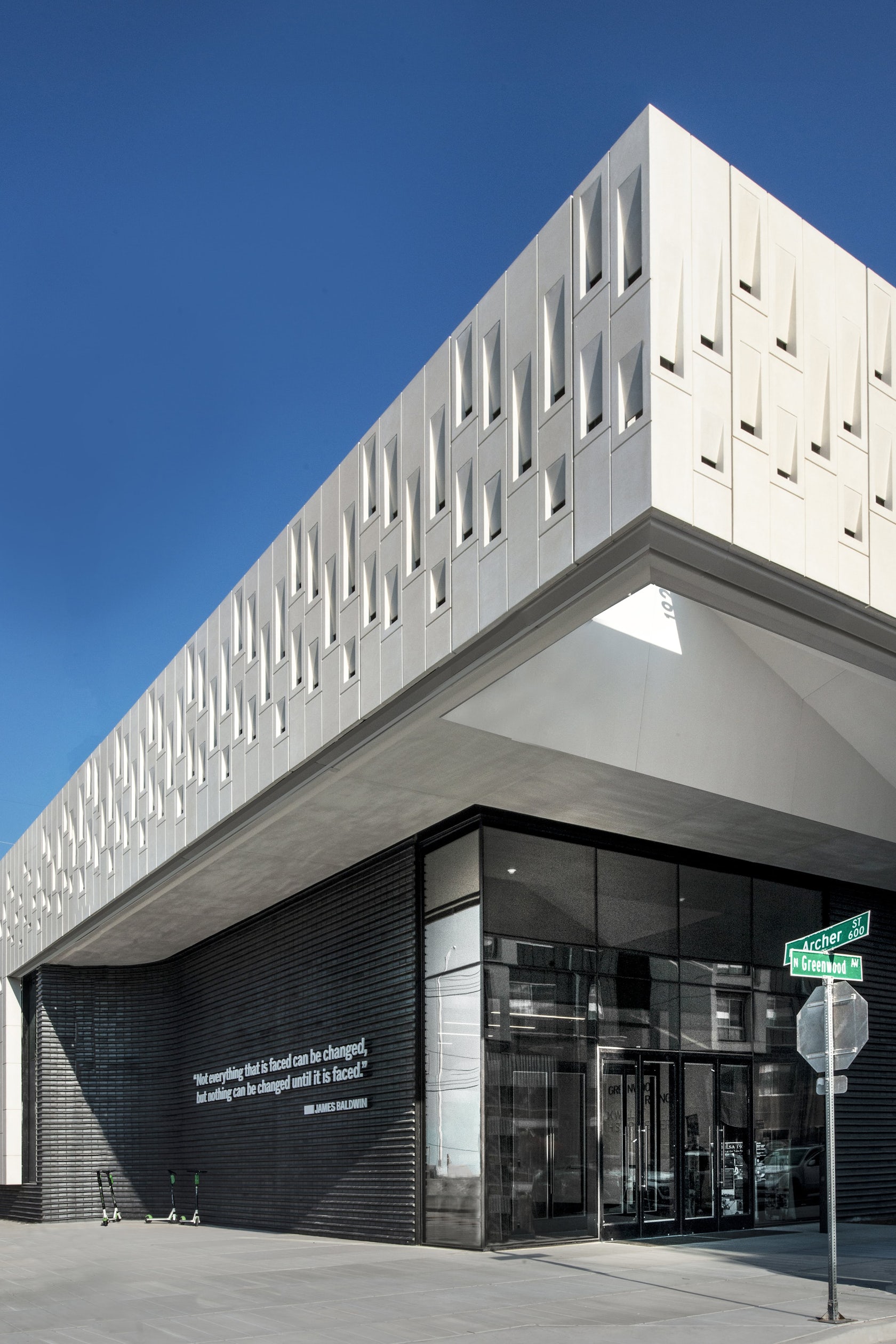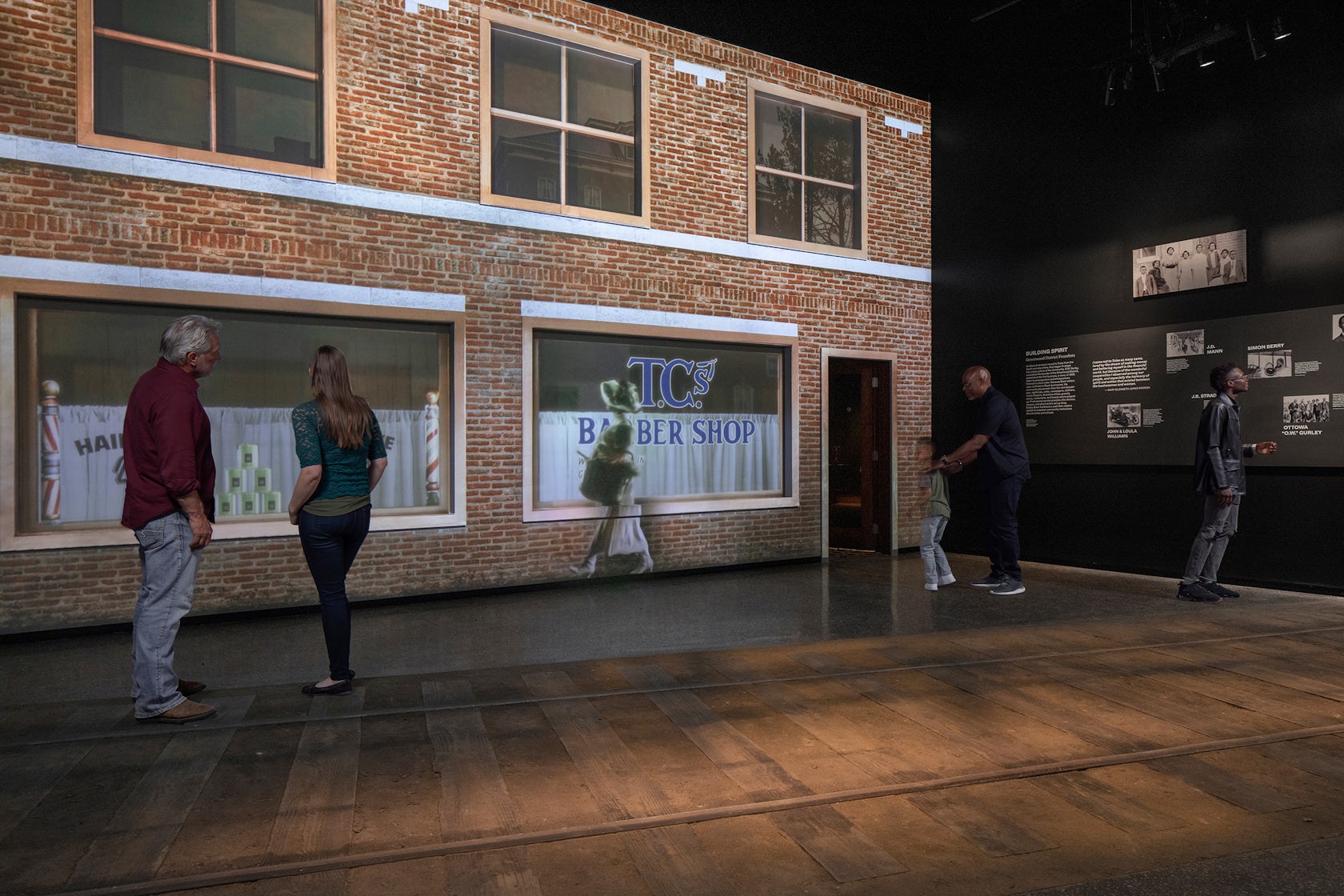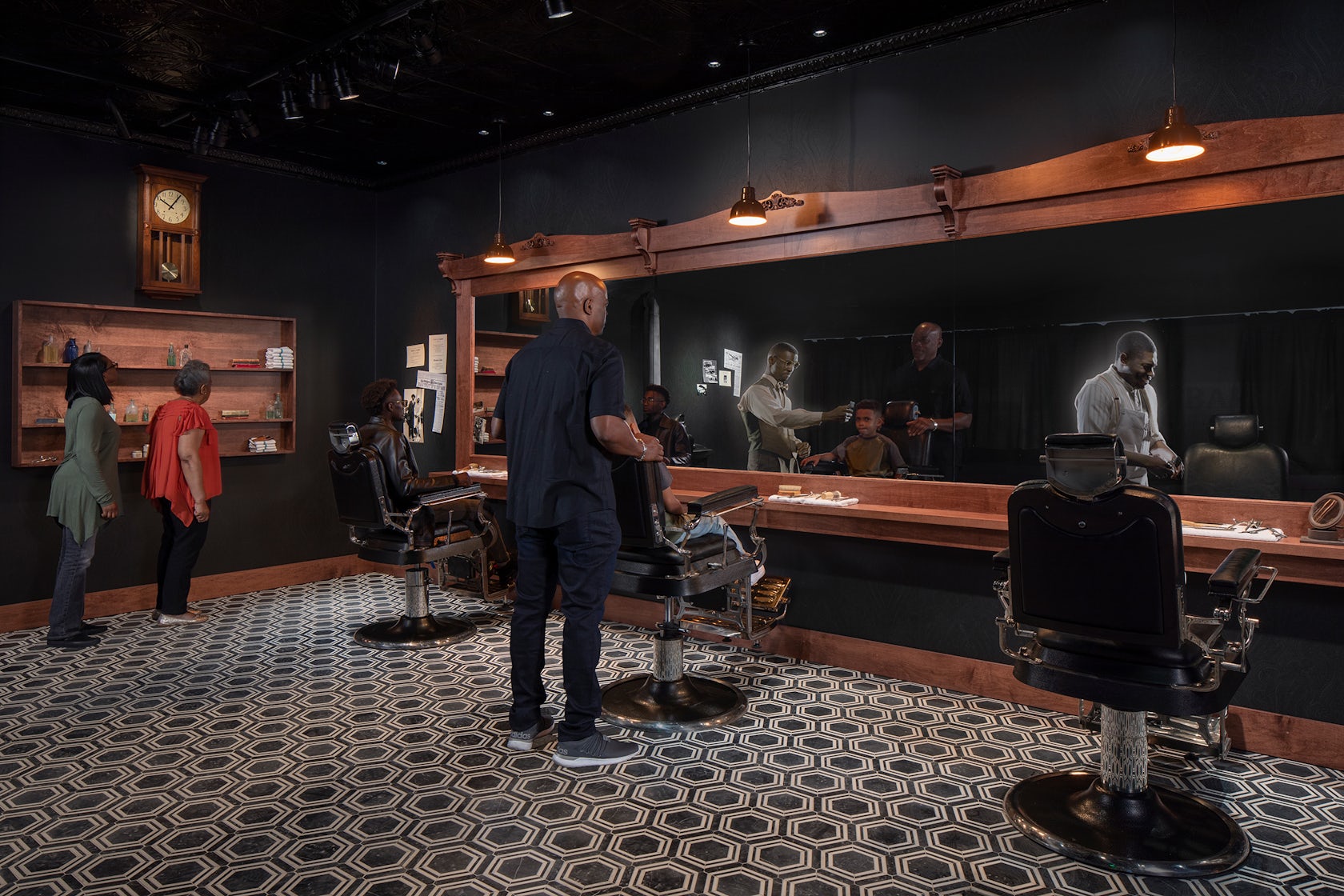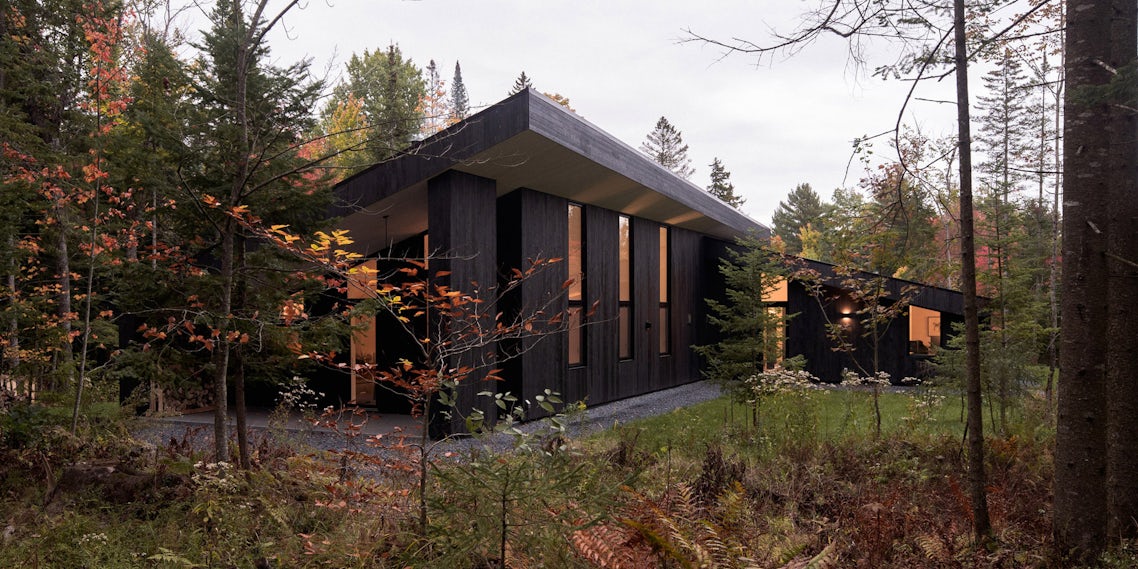In 1921, a mob of white Tulsans destroyed the Historic Greenwood District known as Black Wall Street, killing and injuring thousands. Local Projects’ task is to share the truth about a domestic terrorist attack whose history has been suppressed, tell the story of the ingenious community that survived, and empower visitors to heal and take action toward an equitable future.
Architizer chatted with both L’Rai Arthur-Mensah, Project Director with Local Projects, and their client Phil Armstrong, Museum Director, to learn more about this project.
Architizer: Please describe the project brief and creative vision behind Greenwood Rising.
Phil Armstrong: The events of the 1921 Tulsa Race Massacre have increasingly entered public consciousness thanks to works like Ta-Nehisi Coates’ “The Case For Reparations” and HBO’s Watchmen. But when I started talking to folks on the streets of the Greenwood District at the outset of the project, some didn’t even know a Massacre had ever occurred. We knew we needed to do more to tell the story in the run up to the 100th year anniversary of the Massacre.
L’Rai Arthur-Mensah: We were engaged to tell the story not just of those horrific events, but of the resilient community that built and rebuilt Tulsa’s Historic Greenwood District, also known as Black Wall Street, through an immersive journey that uses projection mapping, holography, and environmental media. Our experience brings to life the memories of the past and the visions of success for the future, and catalyzes important dialogue around racial reconciliation and restorative justice, including reparations.

© Local Projects
What inspired the initial concept for your design?
L’Rai: Our goal for the museum was to humanize history, to give stories of the past the power to inform our present, and to embolden visitors to make future change. We also wanted to make sure and contextualize the tragedy of the Tulsa Race Massacre within the larger story of the Greenwood District, a prosperous community consisting mostly of professionals that emerged just a few decades after slavery ended in the US. The community’s very existence and perseverance flies in the face of the story of free Black people as mostly impoverished victims, and is a testament to the broader story of American freedom and resilience.

© Local Projects
What do you believe is the most unique or ‘standout’ component of the project?
In Life in the Greenwood District, visitors experience the illusion of holographic barbers cutting their hair, while including them in the banter of a Black Barbershop. Each barber shares their individual perspective, speaking to larger trends in black intellectual life at the time, from WEB Dubois to Marcus Garvey. They also speak directly to the visitor as a part of the Greenwood Community, heightening the visitor’s sense of inclusion and shared purpose. This helps the visitor to better empathize with the survivors of the Massacre in the subsequent gallery that recreates it. We’re conducting ongoing visitors studies at the site, and this quote from a young white woman in her 20’s really stuck with me: “…I felt a strong sense of shame…Like you can see the reality of what it was like for people, like a business owner, and what they had to go through and how unfair that was…”

© Local Projects
What was the greatest design challenge you faced during the project, and how did you navigate it?
Phil: The greatest design challenge was the incorporation of artifacts that depict historical racial violence in America as the backdrop of the overall timeline of increasing white supremacy in Tulsa and Oklahoma that led to the outbreak of violence of the 1921 Tulsa Race Massacre. Particularly, the display of a KKK robe triggered a controversial moment in the planning stage. Having an understanding as to the nature of how the robe was acquired and that it was always to be used as an educational tool and not as a ‘mark of white pride’ is what shifted the discussion. The fact that my mother collected these items and acquired this robe as a way to teach her children about the history of White Supremacy and to never forget the struggles of people of color in America was a key factor in being able to move forward and include this textile in the exhibition.

© Local Projects
L’Rai: An important component in the process of truth telling is the engagement and elevation community voices. Specifically, of those in the community that have a deep connection to the history and the stories being told. It’s always a challenge to try to include as many voices as possible in as much depth as possible. We developed multiple touch points for engaging with the community and these voices, approaching community members from the perspective of listening first and then confirming that we heard them correctly before taking action and addressing feedback.

© Local Projects

© Local Projects
Credits
L’Rai Arthur-Mensah is a Project Director with Local Projects. Credits include The Legacy Museum in Montgomery, Alabama, The Fashion For Good Experience in Amsterdam, Netherlands and The Greenwood Rising Museum in Tulsa, OK. Prior to joining Local Projects L’Rai worked as a lead on projects ranging from implementing mixed reality experiences at the Superbowl to creating an online digital version of Kara Walker’s Sugar Baby with Creative Time. L’Rai holds a B.S.E in Industrial and Operations Engineering from the University of Michigan.
For more on Greenwood Rising, please visit the in-depth project page on Architizer.










 Greenwood Rising
Greenwood Rising 


